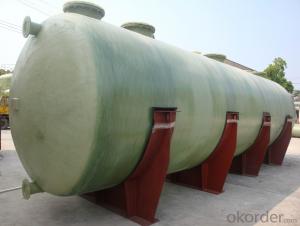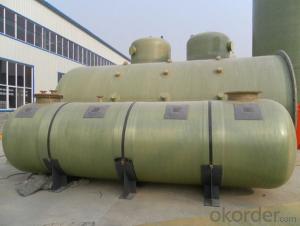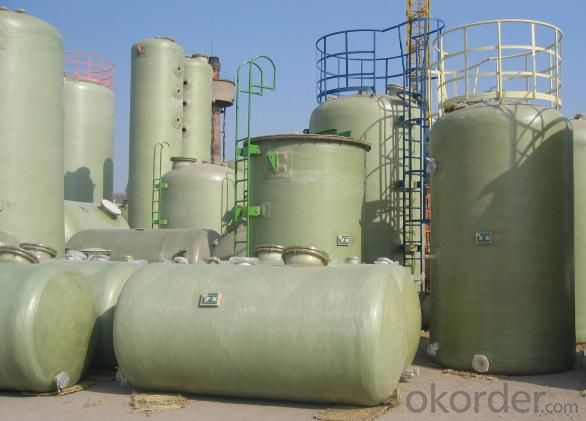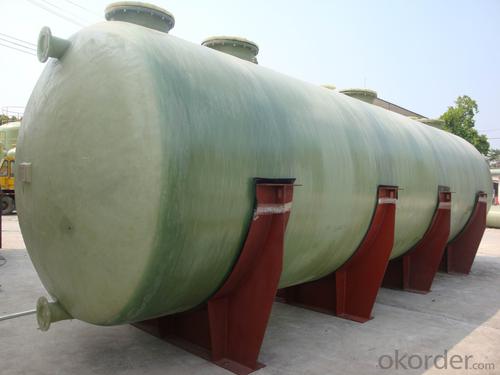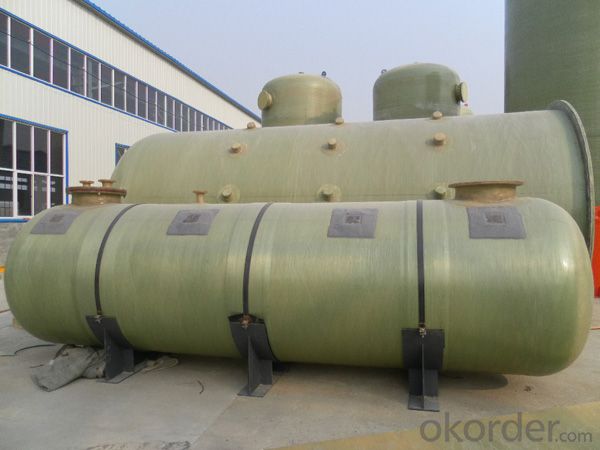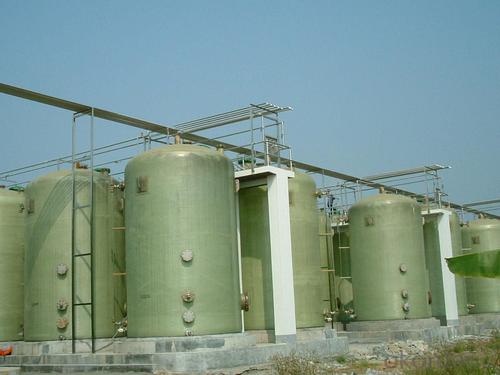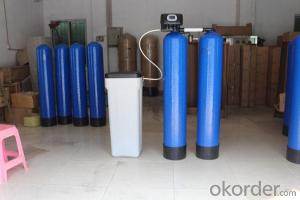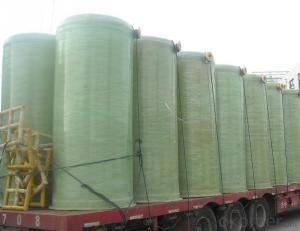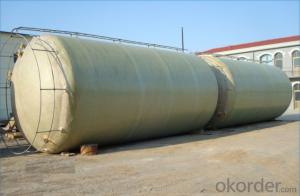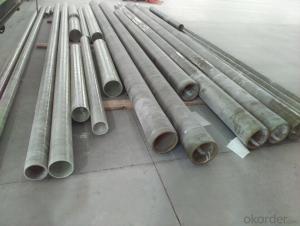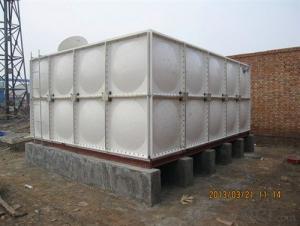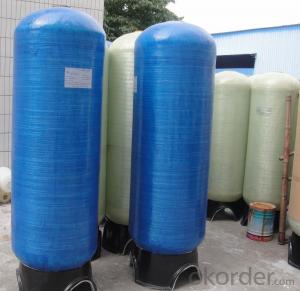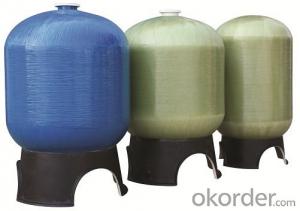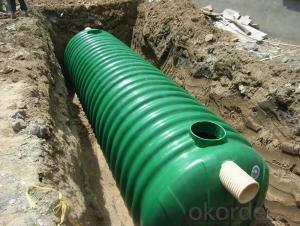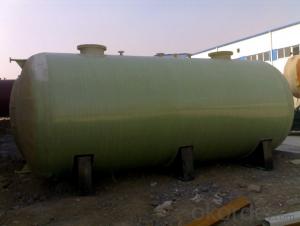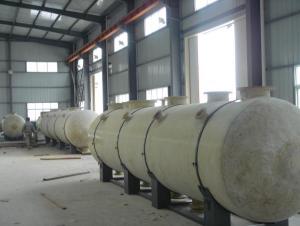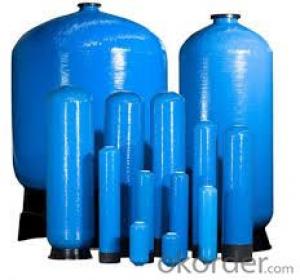FRP Tanks Fiberglass Reinforced Plastic Tank Food Grade Tank
- Loading Port:
- Lianyungang
- Payment Terms:
- TT OR LC
- Min Order Qty:
- 2 pc
- Supply Capability:
- 100 pc/month
OKorder Service Pledge
OKorder Financial Service
You Might Also Like
China National Building Material (Group) Corporation (CNBM) large on-the-spot filament winding FRP tank adopted the large scale on-site vertical design and overall suit equipment and technology which were imported from U.S. TANK INETICS Company which reached the international advanced standard of 1990s. The large FRP container took heat-cured resin as its main component and glass-fiber as its reinforced-material, while adopted double filament mouth to screw-wind and circular-wind with excellent physical property and corrosion resistance, expedient installation and without the need to maintenance, flexible design and rational wall structure.
Specification of FRP Tanks:
Diameter: 4m-25m, Capacity: 100m3-6000m3
Appearance design: vertical storage tank, horizontal winding tank, transportation tank, reaction tank;
Uses: Hydrochloric acid tank, pressure tank, anti-corrosion tank, glass fiber reinforced plastic tank, soy sauce anti-corrosion tank, glass fiber reinforced plastic tank, soy sauce tank.
FRP tank: the use of resin as adhesive, glass fiber reinforced plastic fiber as reinforcing agent.
Physical characteristics: the proportion of glass steel is usually 1.8-2.1, 1/4-1/5, steel, cast iron and plastic than the strength are high. The coefficient of thermal expansion of glass steel and steel is roughly equal, and the heat transfer coefficient is only 0.5% of steel.
The characteristics of FRP tanks:
1, light weight, high strength: relative density between 1.5 and 2.0, only carbon steel 1 / 4 to 1 / 5, but the tensile strength is close to or even more than carbon steel, and specific strength can compared with high-grade alloy steel.
2, good corrosion resistance: the atmosphere, water and the general concentration of acid, alkali, salt, and a variety of oils and solvents have better resistance.
3, excellent electrical properties: can be used to manufacture the insulator.
4, excellent thermal performance: the low thermal conductivity of glass steel, at room temperature for 1.25~1.67kJ/ (M - H - K), only the metal 1/100~1/1000, is an excellent thermal insulation material.
5, excellent technology: according to the shape of the product, technical requirements, the use of flexible selection of molding process; process is simple, can be a one-time molding, economic effect is outstanding.
Application range of FRP tanks :
Medium application:
1, hydrochloric acid, sulfuric acid, phosphoric acid, nitric acid, organic acid, hydrofluoric acid, fluoride, saline, sewage etc.;
2, food grade (vinegar, soy sauce, water, etc.);
3, polyvinyl chloride (FRP/PVC), polypropylene (FRP/PP), etc..
Industry application of FRP Tanks
FRP tanks are widely used in chemical, petroleum, manufacturing: paper, food, electronics, pharmaceutical, packaging, transportation and other fields.
Pictures of FRP tanks:
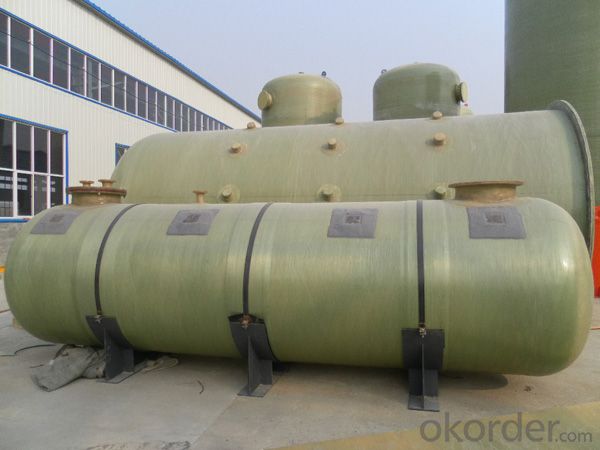
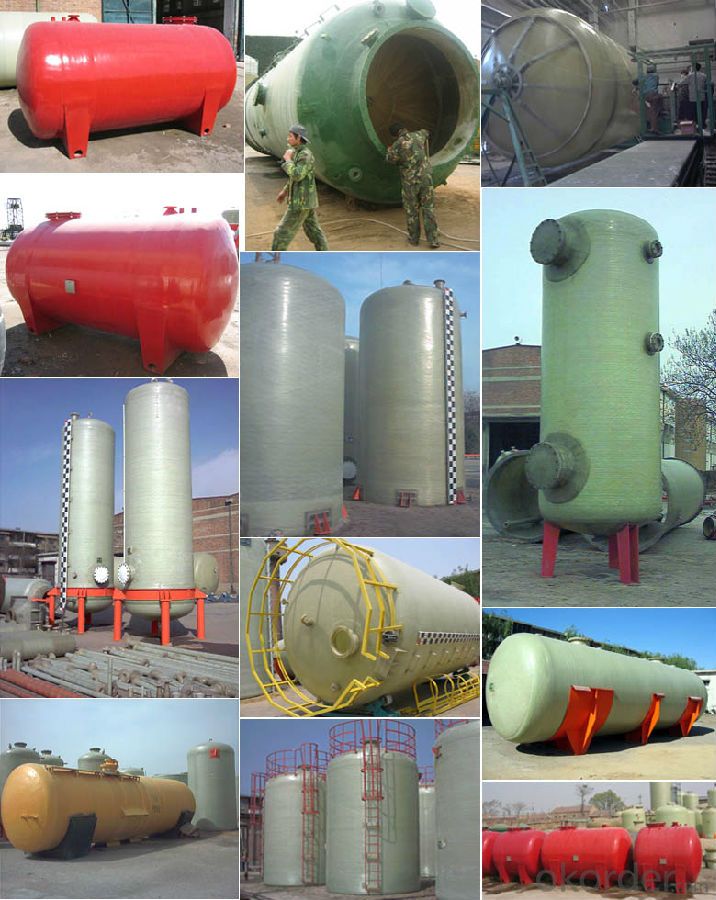
RFQ of FRP tanks:
Q: What is fiberglass composite?
A: Fiberglass composite is a laminate made from glass fibers or filaments and thermosetting resin. It is commonly known as RTRP, RTMP, FRP, GRP, GRE and GRV.
Q: Are fiberglass tanks fragile?
A: Due to the elastic nature of the resin which holds the clothlike glass fibers together, fiberglass is strong and flexible. FPI products meet the rigorous "Impact Test" requirements of the international standard e.g. BS, API, ...
Q: Are fiberglass tanks an 'off the shelf' item?
A: No. FPI's fiberglass pipes are bespoke products engineered to the highest international standards and specifications.
- Q: What are the manufacturing processes of FRP tanks?
- The lining has the skeleton and the airtight function, is a part of the finished product. When designing the lining, pay attention to the sufficient strength and rigidity. The thickness of the inner layer is more than 3mm (see Table 1), and the resin content is greater than 80%. The corrosion resistant surface felt, short cut felt and cloth handle paste can be used for making the inner layer. Its production process is roughly as follows: mold making, mold, tank head hand paste glass fiber products, after curing, stripping adhesive, bonding head, air nozzle test, grinding, repairing, too. For the qualified lining lining molding, using two type sealing and simplified one and head connecting two. Thus, it is easier to produce a qualified lining and increase productivity than a three end combination of a sealed tail, a simplified type and a head. The key to making the qualified lining is the connection between the head and the cylinder. The head and the cylinder should be made of socket joint, because the plug joint has the advantages of high strength of joint, good performance of internal pressure, uneasy leakage and convenient assembly. As long as the socket structure is reasonable, it will not leak after use. The bonding joint depends on the resin cement and the outer FRP reinforcement. Wherein, the daub is applied between the socket and the socket and plays the first line of defense. It is made up of resin and filler, and resin has the function of adhesion and seepage prevention. It requires good toughness and higher adhesion, so epoxy resin should be used as daub. After the first line of defense, the seepage prevention mainly depends on the FRP reinforced layer. The layer consists of fiberglass products and resins. Among them, glass fiber products such as blankets and cloth between the fiber gap, can not be impermeable, can only play a strengthening role.
- Q: What aspects of FRP tanks are used in general?
- Product categories: horizontal tanks, vertical storage tanks, transport tanks and on-site winding large storage tanks.
- Q: Can formaldehyde be used in FRP tanks?
- After investigation, vinyl, furan, phenolic and epoxy FRP are resistant to formaldehyde, the temperature is less than 60 degrees.
- Q: How much water glass grit filter tank with import pressure?
- Glass fiber reinforced plastic products can not withstand too much pressure, the material determines, but do not generally pressure requirements are high, is no problem. As you say, a sand filter can be fine.
- Q: Is FRP tank corrosion resistant?
- FRP tanks are resistant to corrosion.
- Q: What are the technical standards for FRP tanks?
- It is usually composed of four layers: inner surface layer, inner layer, strength layer and outer surface layer. Other layered structures may also be adopted according to requirements; the wall thickness of the tank shall be based on the design requirements.
- Q: Glass toughened septic tank can out of plastic pipe. How do you fix it?
- Outdoor use of FRP tanks after many years, due to aging of the surface layer, resulting in peeling resin or fiber exposure. It is recommended that paint or resin be applied to the outside of the tank every two or three years to prevent aging and prolong service life.
- Q: Difference between glass fiber reinforced plastic and insulating board
- Insulating board, also called insulating rubber pad, insulating pad, insulating gasket, insulating blanket. Insulation pads are widely used in substations, power plants, power distribution houses, test rooms and outdoor live work.
- Q: Glass fiber (resin) storage tank for hydrochloric acid, how many years of service, please list the basis, thank you!
- According to the use of resin and hydrochloric acid concentration and temperature are different, 30% concentration 100 DEG C can be used for a long time, more than 25 years
- Q: What are the 4 layers of FRP tanks?
- Sub lining: to protect the lining role, in case the lining burst, it will not cause product leakage, double insurance.
Send your message to us
FRP Tanks Fiberglass Reinforced Plastic Tank Food Grade Tank
- Loading Port:
- Lianyungang
- Payment Terms:
- TT OR LC
- Min Order Qty:
- 2 pc
- Supply Capability:
- 100 pc/month
OKorder Service Pledge
OKorder Financial Service
Similar products
Hot products
Hot Searches
Related keywords

